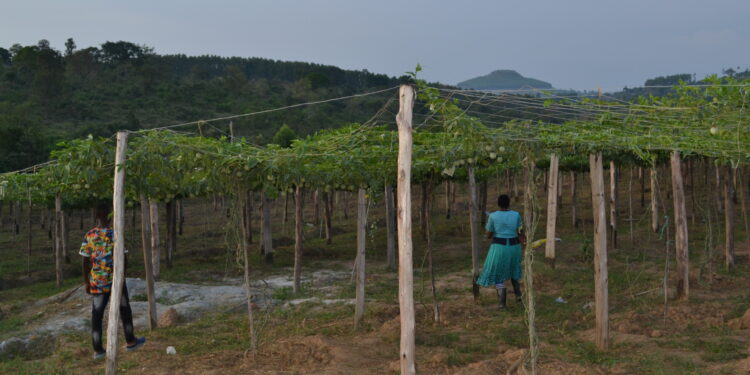By Dicta Asiimwe and Ruth Keah
Until 2017, Tabitha Kisinga a mother to a set of triplets and seven other children was farming her husband’s family land. She depended on the March to May and October to December rainy seasons that used to be the norm in her husband’s native Kwale County-Kenya.
But the rainy seasons had become erratic, and it started to become increasingly hard to raise her big family on income from farming since money from her husband’s provision of casual labour was never enough.
In 2016, Kisinga says the drought was so bad that everything she planted dried. This brought the family to the realization that survival would be difficult it they continued to depend on rainfed agriculture.
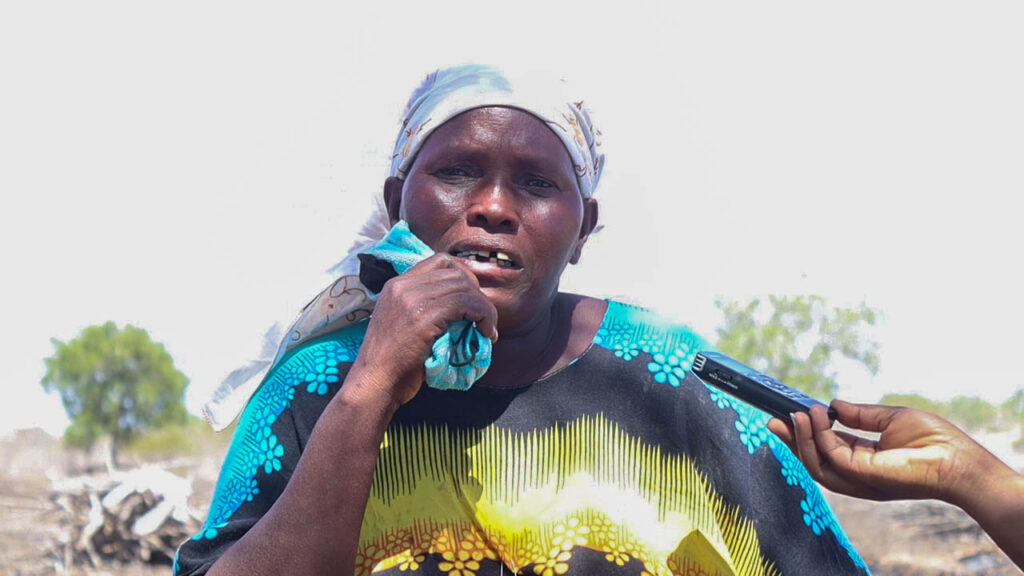
So she and her husband teamed up with 21 other farmers in her area to raise Ksh 70,000 ($615) which they used to purchase 3 acres of land near the Ngangani dam so that they could start a mini irrigation scheme.
Members of the group contributed another Ksh 22,000 ($193) to buy tanks and a generator for pumping irrigation water. They then registered themselves with the government for KSH 1,100 ($10) to mark the beginning of Ngangani irrigation scheme.
“We started this project in 2017 so that we can eradicate poverty in our community,” says Kisinga who is also chairperson of Ngangani irrigation scheme.
Kisinga says the plan to use irrigation was working. The farmers planted tomatoes, collard greens, spinach, onions and African nightshade that would be sold to middlemen who came to Ngangani with trucks, allowing members of the irrigation scheme to concentrate on farming, while distribution was handled by someone else in the value chain.
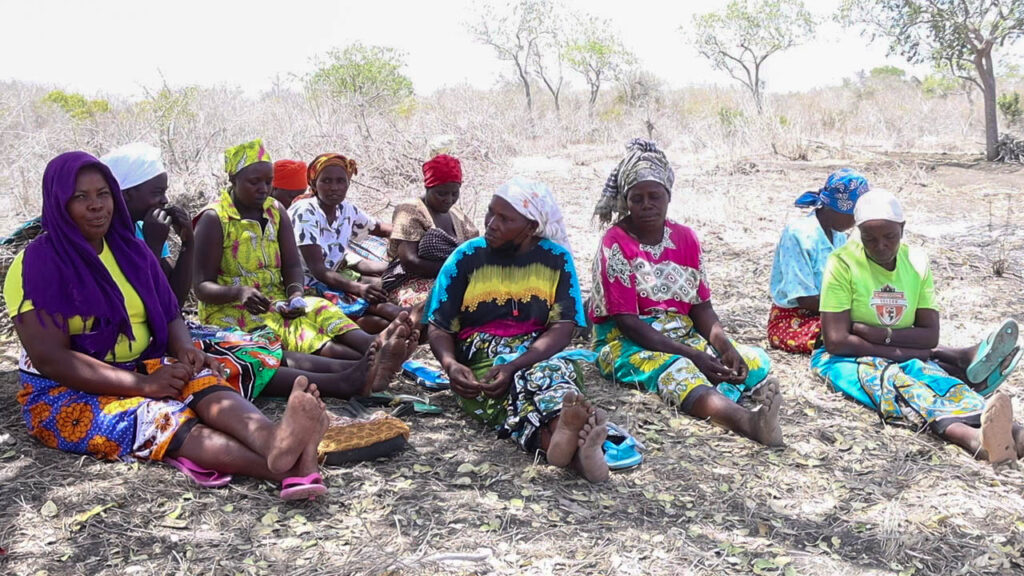
All changed in early 2020, when Covid-19 set foot in East Africa. The pandemic triggered strict lockdowns as a measure to contain the virus spread. This meant members of Ngangani irrigation group had to reorganize for their farm to survive.
Timothy Mwaniki a farmer and secretary of the group says following the lockdown the prices of petrol increased in Kenya.
“When the government put some measures to stop the spread of the coronavirus, getting petrol to use in our generators was very hard because prices shot up and we were not making any sales,” says Mwaniki.
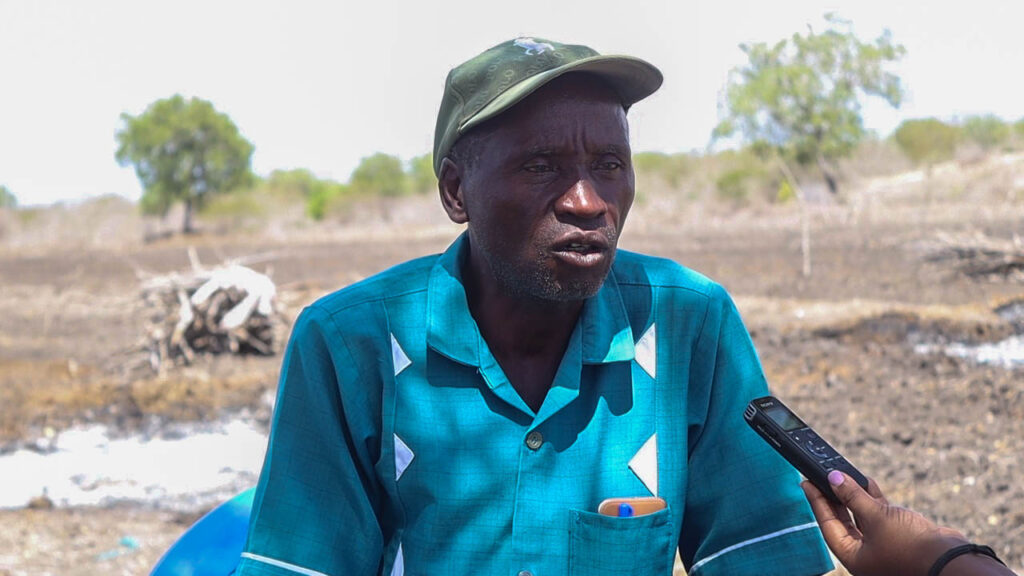
Information from Kenya’s Energy and Petroleum Regulatory Authority show the price for a liter of fuel increased by 9.27 per cent from Ksh 44 ($0.38) to Ksh491.5 ($4.3). This forced Ngangani farmers to dig into their savings to keep the irrigation scheme running.
Kisinga says the lockdown also meant that the middlemen were no longer coming to Ngangani to buy their produce, which caused a glut.
“Farmers resorted to transporting their produce on motor cycles to nearby towns like Taru and Samburu, where they would sell to the largely semi nomadic population in the area,” Kisanga explains, adding that even after this, Ngangani irrigation farmers’ group members still struggled for income, as buyers didn’t always come to the markets.
Kisinga recalls one time when having ferried their produce to the next town for sale they found no buyers and this forced members to let tomatoes on half an acre of land to rot.
“We had half an acre of tomatoes. But the women who used to travel in large numbers to buy the tomatoes never came to the market due to travel restrictions,” Kisinga says.
She adds that most of the markets that would have provided an additional market for their produce were closed.
Closure of markets was also a big problem for Noeline Nakanwajji – a mixed farmer in the central part of Uganda located in the semi-arid Ankole-Masaka corridor.
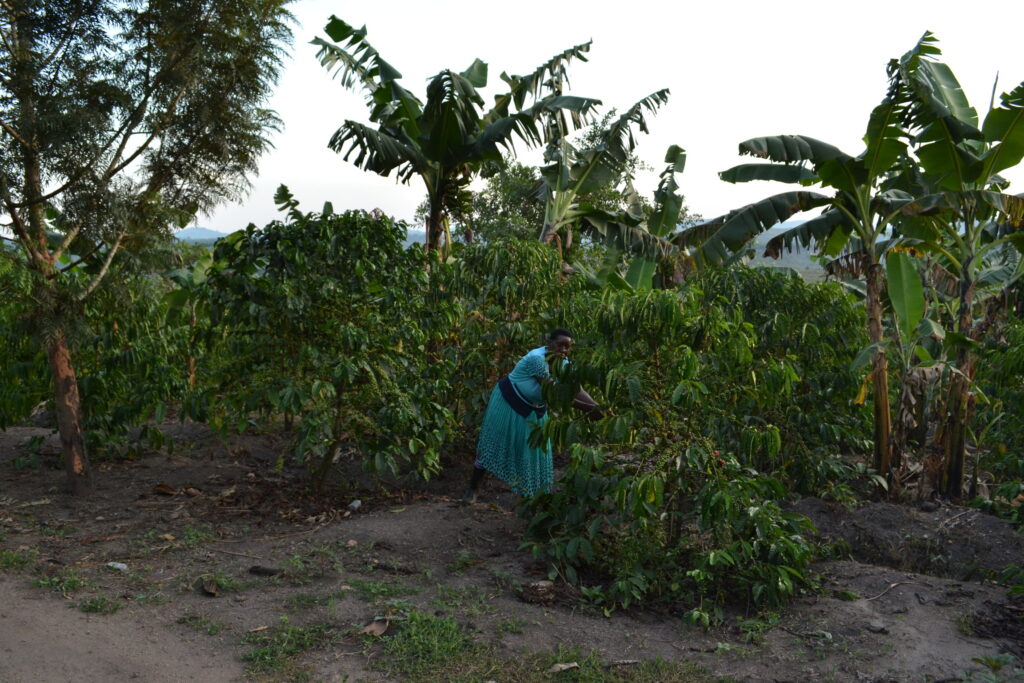
In 2019, Nakanwajji was lucky the government gave her a solar powered pump, as part of Uganda’s efforts to increase the use of renewable energy for irrigation in the country.
Through the third National Development Plan (NDP) , Uganda has set itself a target of increasing the area under formal irrigation from 15,147 hectares to 27,424 hectares.
It is through one of the proposals under the NDP that Nakanwajji was able to get her solar powered pump alongside a 10,000 litres capacity water tank from Uganda’s National Agricultural Advisory Services (NAADS).
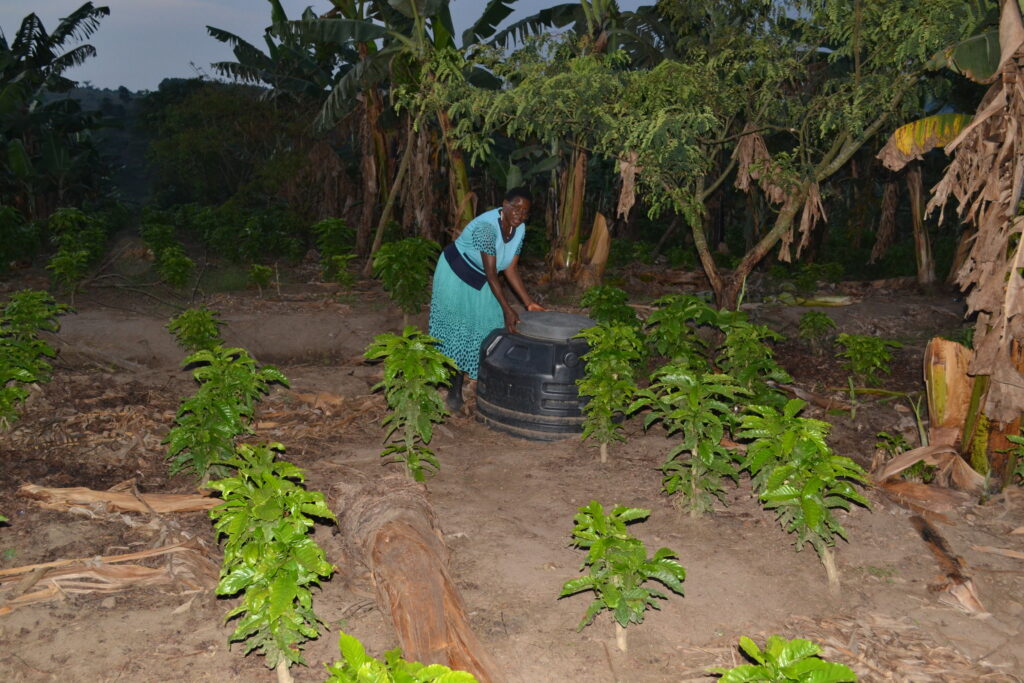
This enabled Nakanwajji to irrigate her mixed farm of tomatoes, a budding passion fruit garden, as well as a coffee nursery bed.
With improvement in avaliability of water, Nakanwajji expected an increase in income but this was disrupted by Covid-19. Nakanwajji says prices of passion fruit and tomatoes declined, as the introduction of lockdown measures to control the spread of Covid-19 affected cross border trade.
“We used to plant tomatoes for export to South Sudan and Kenya but the market collapsed during Covid-19,” says Nakanwajji.
Nakanwajji explains that a wooden box of tomatoes that used to cost Ush 400, 000 ($112.6) reduced to Ush 100,000 ($28.2), affecting her ability to invest further in the farm.
A collapsed market, meant a reduction of Nakanwajji’s investment in her farm. One of the investments she says suffered is her ability to buy equipment for drip and sprinklers in her gardens.
NAADS had given her 10,000 litre capacity water tank and solar panels to pump the water, but not the pipes that would deliver the water to different parts of the farm.
With the drop in prices, farm income reduced – forcing Nakanwajji to resort to the use of watering cans as she awaits stability of the market.
She is also looking for another organization to donate to her a drip or sprinkler irrigation system to reduce the labour intensity of her current irrigation method.
Alternative funding has been found by farmers like Margaret Tabaruka another mixed farmer, who also received running water for irrigation from NAADS.
Tabaruka however says she would have preferred a drip or sprinkler irrigation system but they were never provided.
She, however, says NAADS linked her to officials running the World Bank funded micro-irrigation program that is managed by the ministry of agriculture, alongside local government officials from 40 districts across Uganda.
Tabaruka says her farm has already been visited by officials running the program and she expects to benefit from the $50 million earmarked by the World Bank to provide high value crop farmers with subsidized irrigation equipment.
Unlike the NAADS equipment, which is free, the World Bank money will give a 25 per cent subsidy to farmers using non-renewable energy to power their irrigation operation. Those using renewable energy such as solar are to get a 75 percent subsidy.
Struggle to Keep Afloat
Wasswa Lubega a farmer from Mpigi district in central Uganda, is one of the many farmers who have struggled to keep afloat in agriculture. He used to grow passion fruits on a large scale using solar-powered irrigation system but he says he now is on sabbatical from agriculture.
“Before the Covid-19 pandemic, I was employing 60 workers because the passion fruit business was profitable. The bag of passion fruits was between Ush 500, 000 ($141.8) and Ush 750, 000 ($212.7). When the pandemic hit, the prices drastically dropped to Ush 110, 000 ($28.4) per bag,” Lubega explains.
While the prices have since increased to Ush 300, 000($85.1), Lubega says the losses from Covid-19 were too much to the extent that he was forced to reduce the size of his workforce from 60 people to 30.”Personally, I am taking a break. Let others manage until I recover from the losses I incurred due to the Covid-19 pandemic.
The despondency and losses occasioned by Covid-19 has according to experts affected many farmers and this is reversing the number of farmers interested in acquiring irrigation equipment.
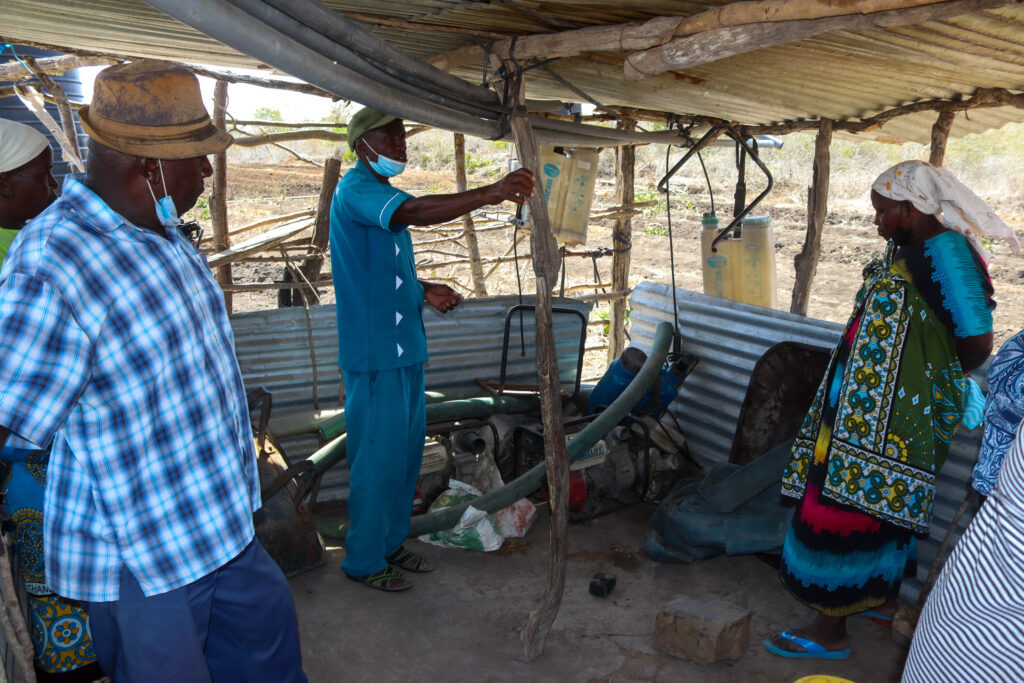
According to a 2005 joint report by the African Development Bank (AfDB) and the Food and Agriculture Organisation (FAO), formal irrigation in Uganda had been expanding at an annual rate of 0.05 percent, although changing weather patterns were driving farmers away from dependence on rainfall.
Information from the 2018 Annual Agricultural Survey, shows about 2 per cent of agricultural households in Uganda using some kind of irrigation compared to 0.4 percent in 2017. The same agricultural survey of 2017, had shown only 0.4 per cent of the households using irrigation.
Dr. Kennedy Ignokwe the FAO Uganda Climate Change Programme Team Leader says the rapid change in the population of Ugandan households using irrigation before Covid-19 was due to changing weather patterns and unpredictable rainfall seasons.
“Anecdotal observations across the country shows farmers near water bodies such as shallow wells, wetlands, streams/rivers, lakes are engaged in some form of irrigation from manual watering cans, pedal pumps, diesel engine pumps and packaged solar powered pumps,” he says.
He, however, notes that the Covid-19 pandemic slowed the adoption of irrigation technologies.
“COVID-19 and the attendant restrictions have slowed activities across the board as witnessed by the downturn in economic activities,” he explains adding that this (Covid-19 and its related restrictions) must have hindered plans and activities related to either supply, installation or repair of solar irrigation systems.
“FAO Uganda, for example, have had to adhere to the government restrictions regarding travel. This of course led to a slowdown of our activities like to installation of irrigation systems, training of farmers or procurement of such systems,” he elaborates.
Jonathan Bukenya the Irrigation Engineer at Davis & Shirtliff a company whose services include the supply and installation of irrigation equipment agrees that Covid-19 negatively affected their operations.
While he says they were able to move even during the severe lockdowns- courtesy of travel permits from the government, farmers’ enthusiasm in acquiring irrigation equipment declined.
He says that before the Covid-19 pandemic, they had registered an increase in the number of farmers from across Uganda coming to purchase irrigation equipment but the interest has since waned.
“Groups of coffee, tomatoes and farmers of other high value crops used to purchase irrigation equipment that we would install for them. After Covid outbreak, in Uganda, the number of farmers purchasing and installing irrigation equipment reduced by 60 percent” he narrates. says.
Mr Bukenya says farmers and farmer groups privately purchased less equipment when compared to period before Covid-19.
This story was supported by InfoNile with funding from IHE-Delft Water and Development Partnership Programme.


